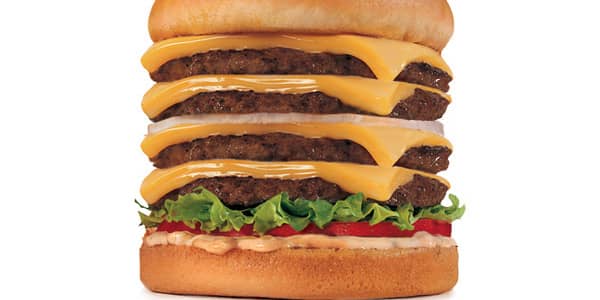When is brown better than white? The answer may be: When you’re trying to be green.
Cascades Tissue Group, North America’s fourth-largest producer of towel and tissue paper, is marketing Moka, a 100-percent recycled, unbleached bathroom tissue, to businesses, and is hoping to introduce a similar product to consumers later this year.
To drive home the product’s environmental credentials, the company is mixing together 80 percent post-consumer material — essentially office paper and the like — and 20 percent recovered corrugated boxes, to achieve just the right shade of brown, a color the company believes has become synonymous with being environmentally friendly.
Cascades is betting American consumers have become so accustomed to seeing brown napkins and paper towels they associate these products with a positive environmental message. As a result, Cascades expects some consumers are ready to accept toilet paper that is not the usual bright white.
But Americans have been very resistant to colored bath tissue in the past, and Cascades' rivals aren’t as confident the market will be receptive to the color choice.
“I think in the back of the mind there is this issue of cleanliness, and white is considered to be a sign of a product that is clean,” said Lisa Morden, tissue product manager for Kimberly-Clark’s K-C Professional North America unit.
Cascades disagrees. A small survey the company conducted of about 100 consumers found 82 percent would be willing to buy beige bath tissue, said Mark Sormanti, director of sales at Cascades’ U.S. retail business.
Part of the reason is consumers have become accustomed to seeing brown paper products. From corporate cafeterias to Dunkin’ Donutsto Starbucks , when you reach for a napkin more often than not, it’s brown. And this is despite the fact that recycled paper can come in a wide range of hues from dark brown to beige to off-white to gray.
For the bath tissue, Cascades chose beige because the gray color that can result in using a mix of just recycled office paper can look too dirty. It also fits in with the hue of its paper napkins sold under the Moka label.
However, if the brown color doesn’t communicate the full "green" message, the company has come up with stickers and signs businesses can use to explain the benefits of the product.
“When you explain the benefits, there is less resistance,” said Isabelle Faivre, marketing director for Cascades Tissue Group.
Cascades estimates Moka’s environment impact is about 25 percent less than its earlier recycled fiber bathroom tissue that uses a chlorine-free whitening process for aesthetics. That’s the result of both the reused materials in the product as well as the streamlined production process that skips the extra steps of the whitening process and saves energy.
That can add up. According to Cascade, about 3.4 million tons of bath tissue are used each year in the U.S. and 53 percent of that is made from virgin fiber sources. If all of this was swapped to recycled sources, it would save about 30.6 million trees and 68 million gigajoules of energy, or about the annual consumption of nearly 620,000 households.
Cascades' experience with bringing its Moka napkins to market taught it that if consumers become used to a product away from home — at offices, hotels and other commercial businesses — they may be more willing to experiment at with it at home.
At the moment, the company is only selling the beige bath tissue to its commercial customers and through Office Depot . Its customers, particularly in the lodging industry, have been receptive to the idea because they often are looking for ways to show how they conserve resources, the company said. Unlike some “green” products sold at a premium, the bath tissue is unlikely to cost more than other types of bath tissue because recycled pulp is often less expensive than other types of pulp fiber.
The company expects consumers will slowly adopt it. In 2004, the Moka napkin line represented 10 percent of its total away-from-home sales in North America. Now, it comprises almost 25 percent of its case sales.
There is already interest in the bath tissue from grocery stores and other mass merchants, said Mark Sormanti, director of sales at Cascades U.S. retail business.
He expects Cascades will sell the product under existing “green” brands in stores like WholeFoods or Trader Joe’s, which tend to attract consumers who are more interested in environmentally friendly products, but details of these arrangements won’t likely be announced until at least the third quarter of this year.
When it does, Cascades will be charting new territory. Rivals such as Procter & Gamble , the maker of Charmin, and Kimberly-Clark , the maker of Scotts, do not sell brown bath tissue to the consumer market.
“We are not seeing large consumer shifts in the overall consumer toilet paper or paper towel categories,” said P&G spokeswoman Lisa Jester, in an email.
Kimberly-Clark sells Scott Naturals, a line of paper towels, napkins and bath tissue that uses 80 percent-recycled material, as a green alternative. The company believes the ratio is the right one in order to strike a balance between using more sustainable materials and not making too many trade-offs.
Customers “still want softness, performance and strength,” said Kay Jackson, a Kimberly-Clark spokeswoman.
The company is also looking to reduce its pulp consumption by offering bath tissue without paper tubes in the middle to both the commercial and consumer markets.
Ultimately, it will come down to performance.
Cascades believes it has struck the right balance, which is an achievement due to the challenges of working with recycled fibers. The strands of fiber in recycled pulp are shorter than those made from virgin pulp because they get chopped up in the recycling process. Here, Cascades' decision to add recycled cardboard pulp may work in its favor because the strands of cardboard fiber are longer, and the mix of the two types of recycled pulp may make the bath tissue softer.
Questions? Comments? Email us at consumernation@cnbc.com. Follow Christina Cheddar Berk on Twitter @ccheddarberk.





